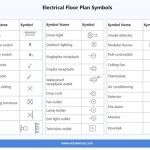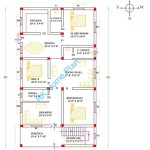Easy-To-Maintain Low-Light Houseplants
For individuals seeking to introduce greenery into their living spaces without demanding extensive care or bright sunlight, low-light houseplants offer a practical and aesthetically pleasing solution. These plants have adapted to thrive in shaded environments, making them ideal for apartments, offices, and homes with limited natural light. Choosing the right low-light houseplants can transform dull corners into vibrant, welcoming areas with minimal effort.
The term "low-light" does not imply total darkness; rather, it refers to areas that receive indirect sunlight or are situated away from windows. North-facing rooms, spaces with heavily shaded windows, or areas illuminated only by artificial light typically qualify as low-light environments. Understanding the nuances of low-light conditions is crucial for selecting plants that will not only survive but flourish.
Before introducing any plant into a low-light environment, it is essential to assess the existing conditions. Factors to consider include the amount of indirect light available, the humidity levels, the temperature fluctuations, and the frequency with which one is prepared to water the plants. By understanding these aspects, one can make informed decisions about which species are most likely to thrive.
Selecting Appropriate Low-Light Houseplants
The selection of low-light houseplants is diverse, offering a range of textures, colors, and growth habits. Some of the most resilient and popular choices include snake plants (Sansevieria), ZZ plants (Zamioculcas zamiifolia), pothos (Epipremnum aureum), peace lilies (Spathiphyllum), and cast iron plants (Aspidistra elatior). Each of these species possesses unique characteristics that make them particularly well-suited for low-light conditions.
Snake plants, also known as mother-in-law's tongue, are renowned for their ability to tolerate neglect and thrive in extremely low-light conditions. They feature stiff, upright leaves that come in various patterns and colors, adding a sculptural element to any space. ZZ plants are equally resilient, boasting glossy, dark green leaves and an ability to withstand drought. Their architectural form makes them a popular choice for modern interiors.
Pothos, often referred to as devil's ivy, are trailing plants that can be grown in hanging baskets or trained to climb. Their heart-shaped leaves come in a variety of colors, including green, yellow, and white. Pothos are relatively easy to propagate, allowing one to expand their collection from a single plant. Peace lilies, while requiring slightly more attention than snake plants or ZZ plants, offer elegant white blooms that add a touch of sophistication to any room. They are also effective air purifiers.
Cast iron plants, as their name suggests, are among the toughest houseplants available. They can tolerate extremely low light, infrequent watering, and a wide range of temperatures. Cast iron plants feature broad, dark green leaves that provide a lush, tropical feel. These plants are excellent choices for individuals who are new to houseplants or who frequently travel and may not be able to provide consistent care.
Optimizing Care for Low-Light Houseplants
While low-light houseplants are relatively easy to care for, providing optimal conditions will ensure their health and longevity. The most common mistake in caring for these plants is overwatering. Plants in low-light environments tend to dry out more slowly than those in bright light, making them susceptible to root rot if watered too frequently.
A crucial aspect of caring for low-light houseplants is proper watering. Allow the soil to dry out significantly between waterings. Inserting a finger into the soil to check its moisture level is a reliable method. If the top inch or two of soil feels dry, it is time to water. When watering, saturate the soil thoroughly and allow excess water to drain from the pot. Avoid allowing plants to sit in standing water, as this can lead to root rot.
Fertilizing low-light houseplants should be done sparingly. During the growing season (spring and summer), fertilize once a month with a diluted, balanced liquid fertilizer. Reduce or eliminate fertilization during the dormant season (fall and winter). Over-fertilizing can lead to salt buildup in the soil, which can harm the plant's roots.
Cleaning the leaves of low-light houseplants is also important for their health. Dust and debris can accumulate on the leaves, blocking sunlight and hindering photosynthesis. Wipe the leaves with a damp cloth regularly to keep them clean and allow them to absorb light more efficiently.
Repotting should be done when the plant becomes root-bound, meaning its roots have filled the pot. Choose a pot that is only slightly larger than the previous one, and use a well-draining potting mix. Repotting is best done in the spring or early summer.
Troubleshooting Common Issues
Even with proper care, low-light houseplants may occasionally encounter problems. One common issue is yellowing leaves, which can be caused by overwatering, underwatering, nutrient deficiencies, or pests. Inspect the plant carefully to determine the cause of the problem and take appropriate action.
If the leaves are yellowing and the soil feels soggy, overwatering is likely the culprit. Allow the soil to dry out completely before watering again, and consider repotting the plant in fresh, well-draining soil. If the leaves are yellowing and the soil feels dry, underwatering may be the issue. Water the plant thoroughly and check the soil moisture level more frequently.
Nutrient deficiencies can also cause yellowing leaves. Fertilize the plant with a balanced liquid fertilizer to replenish essential nutrients. Pests such as spider mites, mealybugs, and aphids can also infest low-light houseplants. Inspect the plant regularly for signs of pests, such as webbing, sticky residue, or visible insects. Treat infestations promptly with insecticidal soap or neem oil.
Another problem that can occur is leggy growth, which refers to stems that are long and sparse with few leaves. Leggy growth is often caused by insufficient light. While these plants are tolerant of low-light conditions, they still need some light to thrive. Move the plant to a slightly brighter location or supplement with artificial light.
Brown leaf tips are another common issue. This can be caused by low humidity, dry air, or fluoride in tap water. Increase the humidity around the plant by placing it on a pebble tray filled with water or using a humidifier. Use filtered water or rainwater to water the plant if fluoride is a concern.
By understanding the common issues that can affect low-light houseplants and taking appropriate action, one can ensure that their plants remain healthy and vibrant for years to come. Regular observation and prompt intervention are key to preventing and addressing problems before they become severe.

12 Houseplants For Low Light Ourhouseplants

30 Top Low Light Indoor Plants For Easy Care And Beauty

Low Light Houseplants Easy Care That Thrive In

28 Low Light Indoor Plants Houseplants

20 Low Light Indoor Plants For Your House Get Busy Gardening

The Best Houseplants For Low Light Dennis 7 Dees Landscaping Services Garden Centers

10 Best Low Light Indoor Plants Easy Care Maintenance

Best 30 Low Light Indoor Plants For Home Or Office

Low Light Houseplants Alden Lane Nursery

Top 5 Easiest Low Light Houseplants Plant Savvy








